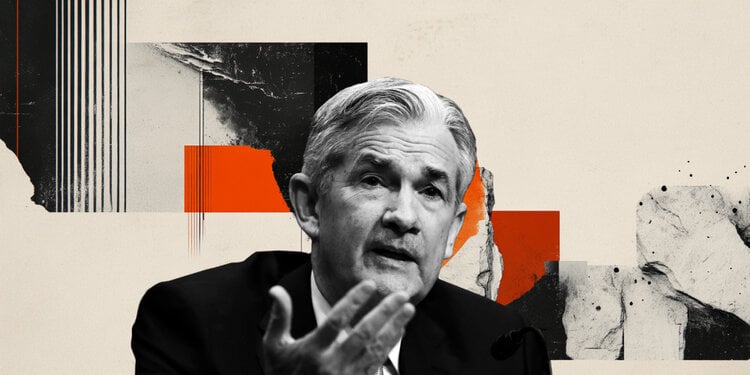- Mexican Peso holds firm ahead of expected Banxico 50 bps interest rate cut.
- US economic data and Powell’s remarks reinforce the easing inflation narrative, weighing on the Greenback.
- USD/MXN remains under pressure after decisively breaking below a key consolidation range.
The Mexican Peso (MXN) holds firm against the US Dollar (USD) on Thursday as markets digest key monetary policy signals from both Mexico and the United States.
At the time of writing, USD/MXN is trading 0.23% lower near 19.35, with attention focused on the Bank of Mexico (Banxico) interest rate decision, where a 50 basis-point cut is widely expected, as well as the latest US economic data, which showed softer inflation and retail demand, and remarks from Federal Reserve (Fed) Chair Jerome Powell.
Together, these developments are shaping expectations for both central banks and guiding near-term direction in USD/MXN.
Diverging policy paths and soft US data weigh on the Dollar, supporting the Peso
The policy divergence between Banxico and the Federal Reserve remains a key driver of USD/MXN price action. Banxico is expected to cut interest rates for the seventh consecutive meeting, lowering the benchmark rate from 9.0% to 8.5% in response to easing inflation and mounting domestic economic headwinds. In contrast, the Fed has kept rates unchanged in 2024, maintaining a restrictive stance as it aims to bring inflation sustainably back to its 2% target.
Fresh US data released Thursday reinforced signs of easing inflation and softening consumer demand. The Producer Price Index (PPI) and core PPI came in significantly below expectations, while retail sales showed only a marginal increase and missed in key underlying components. The overall tone of the data suggests that inflation pressures are moderating, which could strengthen the case for rate cuts later this year.
Meanwhile, Fed Chair Jerome Powell acknowledged the need for a more flexible policy framework in the face of persistent supply shocks, while reaffirming the Fed’s focus on inflation expectations. His remarks, combined with the data, tilted market sentiment toward a more dovish Fed outlook, placing additional pressure on the US Dollar and helping support the Mexican Peso.
Mexican Peso daily digest: Banxico in focus
- Soft PPI inflation data: The Producer Price Index (PPI) fell 0.5% MoM in April (vs. +0.2% expected), while headline PPI YoY eased to 2.4% from 2.7%, pointing to reduced price pressures at the wholesale level and reinforcing the disinflation trend.
- Core inflation weakens: Core PPI, which excludes food and energy, declined 0.5% MoM and slowed to 3.1% YoY (down from 4%), indicating broad-based cooling in underlying inflation and increasing the likelihood of future Fed policy easing.
- Retail sales mixed: Retail sales rose 0.1% MoM, narrowly beating expectations, but the control group fell 0.2% vs. a 0.5% forecast—highlighting soft underlying consumption and potential downside risks to Q2 GDP.
- Banxico rate cuts: The Bank of Mexico has cut interest rates at six consecutive meetings since August. A 50 bps cut on Thursday would mark a cumulative 250 bps (2.50%) of easing over seven meetings.
- Fed stance: In contrast, the Fed has reduced rates three times in the same period, lowering its benchmark rate to the 4.50%–4.25 % range from 5.50%–5.25 %.
- Market sensitivity to surprises: Softer US data has revived market speculation about potential Fed rate cuts later this year. If future data continues to weaken, it could pressure the US Dollar, while stronger readings would likely reinforce the Fed’s higher-for-longer stance.
- Trade tensions with the US: Rising US-Mexico trade tensions threaten Mexico’s export-reliant economy, where over 80% of exports go to the US. Tariffs on goods such as steel and aluminium could disrupt supply chains, dampen investor sentiment, and weigh on growth.
- Tariff policy developments: The US has imposed 25% tariffs on certain Mexican imports not covered by the USMCA, citing national security and drug enforcement concerns, adding uncertainty to the bilateral trade environment.
- USMCA review proposal: According to Reuters, Mexico’s Economy Minister has proposed initiating an early review of the USMCA ahead of the formal 2026 timeline to provide greater clarity and confidence for investors amid rising trade friction.
USD/MXN Technical Analysis: Bearish breakdown extends below key support
USD/MXN remains under pressure, extending its decline below the 78.6% Fibonacci retracement of the October to February rally at 19.57. The pair is currently trading around 19.37, having decisively broken below key psychological support, now turned resistance, at 19.40, reinforcing the prevailing bearish momentum.
The consolidation range highlighted in the purple box in the chart below has been breached to the downside, confirming the continuation of the broader downtrend. This technical breakdown aligns with persistent bearish sentiment.
The next key support lies near the October low at 19.11, a critical level that could serve as a medium-term downside target if bearish pressure continues. A break below this level would open the door to further losses, potentially exposing the psychological 19.00 handle.
On the upside, initial resistance is seen at 19.40, followed by the 78.6% Fibonacci level at 19.57. A sustained move above this zone could signal a shift in momentum, bringing the psychological 19.60 area back into focus.
The 10-day Simple Moving Average (SMA), currently at 19.53, continues to act as dynamic resistance, capping any upside attempts. Meanwhile, the Relative Strength Index (RSI) stands at 37.14, indicating the pair is approaching oversold conditions, though there remains room for additional downside before a corrective rebound becomes technically compelling.
USD/MXN Daily chart
Banxico FAQs
The Bank of Mexico, also known as Banxico, is the country’s central bank. Its mission is to preserve the value of Mexico’s currency, the Mexican Peso (MXN), and to set the monetary policy. To this end, its main objective is to maintain low and stable inflation within target levels – at or close to its target of 3%, the midpoint in a tolerance band of between 2% and 4%.
The main tool of the Banxico to guide monetary policy is by setting interest rates. When inflation is above target, the bank will attempt to tame it by raising rates, making it more expensive for households and businesses to borrow money and thus cooling the economy. Higher interest rates are generally positive for the Mexican Peso (MXN) as they lead to higher yields, making the country a more attractive place for investors. On the contrary, lower interest rates tend to weaken MXN. The rate differential with the USD, or how the Banxico is expected to set interest rates compared with the US Federal Reserve (Fed), is a key factor.
Banxico meets eight times a year, and its monetary policy is greatly influenced by decisions of the US Federal Reserve (Fed). Therefore, the central bank’s decision-making committee usually gathers a week after the Fed. In doing so, Banxico reacts and sometimes anticipates monetary policy measures set by the Federal Reserve. For example, after the Covid-19 pandemic, before the Fed raised rates, Banxico did it first in an attempt to diminish the chances of a substantial depreciation of the Mexican Peso (MXN) and to prevent capital outflows that could destabilize the country.
Read the full article here
















